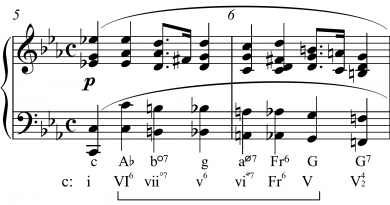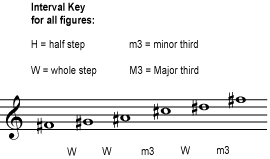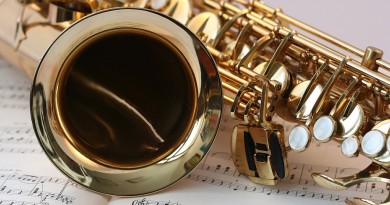Music Chords with chromatic alterations or added tones
Although the third and seventh of the chord are always determined by the symbols shown above, the fifth, as well as the extended intervals 9, 11, and 13, may be altered through the use of accidentals. These are indicated along with the corresponding number of the element to be altered.
Accidentals are most often used in conjunction with dominant seventh chords. For example:
Altered dominant seventh chords (C7alt) have a flat ninth, a sharp ninth, a diminished fifth and an augmented fifth. Some write this as C7+9, which assumes also the flat ninth, dim. fifth and augmented fifth
When superscripted numerals are used, the different numbers may be listed horizontally , or vertically.
| Chord names | Component notes | Chord symbols | |
| Seventh augmented fifth | dominant sev. | augmented fifth | C7+5, C7#5 |
| Sev. flat nine | dominant seventh | minor ninth | C7-9, C7b9 |
| Seventh augmented eleventh | dom. sev. | augmented eleventh | C7+11, C7#11 |
| Sev. flat thirteenth | dominant seventh | minor thirteenth | C7-13, C7b13 |
| Half-diminished seventh | minor seventh | diminished fifth | Cø, Cm7b5 |
Added tone chords
An added tone chord is a traditional chord with an extra added note, such as the commonly added sixth (above the root). This includes chords with an added second (ninth) or fourth (eleventh), or a combination of the three. These chords do not include “intervening” thirds as in an extended chord
Power chords
Power chords are constructed by playing a root, perfect fifth and, in some cases, perfect octave. Because the chord does not contain a third, the major and minor qualities are not present. They are generally played on electric guitar and are used extensively in rock music, especially heavy metal and punk rock, where heavy amounts of distortion are used. Because distortion adds a great deal of harmonic content to an electric guitar’s timbre, perfect intervals are the only intervals with enough consonance to be clearly articulated and perceived at high distortion levels. Even the addition of a third can cause a chord to sound dissonant.
Guitar and pop chords
All pop-music chords are assumed to be in root position, with the root of the chord in the bass. To indicate a different bass note, a slash is used, such as C/E, indicating a C major chord with an E in the bass. If the bass note is a chord member, the result is an inverted chord; otherwise, it is known as a slash chord. This is not to be confused with the similar-looking secondary dominant.
The tables in the linked subarticle include a column showing the pop chord symbols commonly used as an abbreviated notation using letters, numbers, and other symbols and usually written above the given lyrics or staff. Although these symbols are used occasionally in classical music as well, they are most common for lead sheets and fake books in jazz and other popular music.
Polychords
Polychords are two or more chords superimposed on top of one another.




